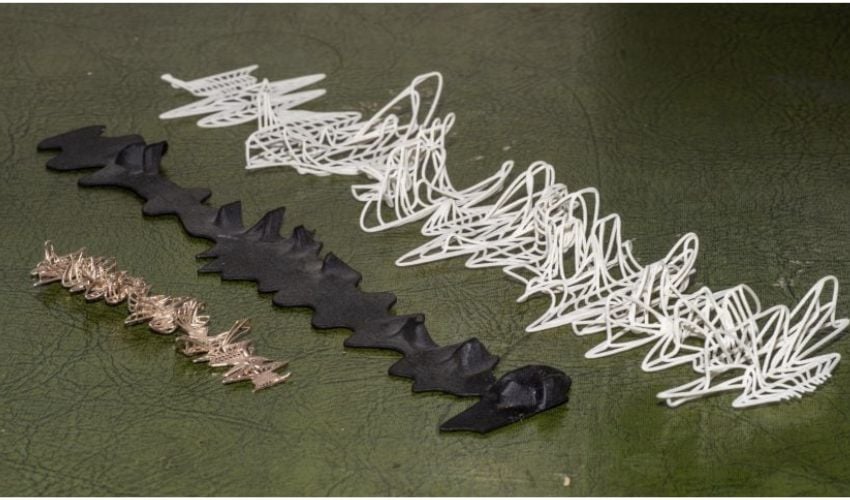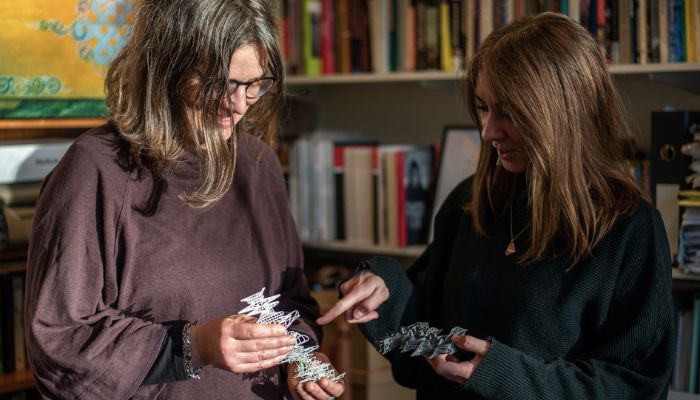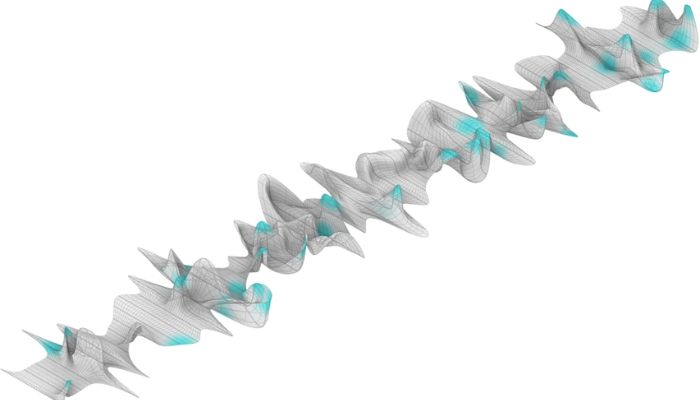Researchers Make 3D Printed Models of Endangered Languages

3D modeling is conceived as a way to demonstrate the complexity of systems, and accessibly showcase intricacy and fine details. While 3D models might bring to mind surgical planning or engineered parts, today we bring you a project from 2022 which uses the technology to map language. Alex Pillen, PhD researcher at the School at Antholopology at UCL, collaborated with Emma-Kate Matthews from the architectural school of the same university. They produced a range of models based on four languages: Kurdish, Tarania, (an Amazonian language), an ancient Mesopotamian dialect called Akkadian and American English.
The researchers wanted to model a grammatical aspect of these languages: specifically, evidentiality. This means whether evidence exists for a statement, and if so what kind; in linguistics it is the method by which evidence is conveyed. In certain languages, speakers express evidentiality through grammar. To take the example of Tarania, the speaker expresses four types of evidence using different grammar structures. These evidence types are visual, non-visual, inferred, reported, and assumed from common knowledge. American English was chosen to compare to the other languages as a reference, because in English evidentiality is not expressed through grammar and so the models were not like the others.

Co-creators of the 3D modeling language project, Alex Pillen (left) and Emma-Kate Matthews (right), with their designs
The team relied firstly on a established theoretical link between grammar and geometry which dates back as far as the 17th century. For the practical side of the project, they used Grasshopper and Rhino3D to map specific language features onto Cartesian system of coordinates. Firstly, they manually formatted the transcript was Excel, and gave each evidential a numerical weighting. The x-axis depicts the timeline of speech as one phrase succeeds another, with the y-axis indicating the number of syllables in each line of a transcript. The x- and y-axis can thereby represent the elementary structure of language reflected in a transcript. The z-axis is the indication of evidential grammar within the sample; these markers take on a ‘virtual weight’ which gives the model its 3D “wireframe” appearance.
The 3D models were first printed on Nylon Plastic (PA12, Polyamide) using Selective Laser Sintering (SLS). They made a further model with a silver alloy which allowed them to showcase finer details of the language. A model was also printed in rubber to improve the ‘fabric-like’ nature. According to the researchers, they hope to use as-yet uninvented materials in the future to make further designs.

Blue highlights in the model of Kurdish indicate word-for-word quotation (that is, direct reported speech of a witnessed utterance), a form of evidentiality
Why Use 3D Models for Language?
In short, the researchers believe that traditional ways of portraying language are overly simplistic to the point of being ‘reductionist’. They feel that 2D models and notation do not do language justice. Furthermore, to them it is important that the models are based on algorithmic design.
Not only did they want to demonstrate the linguistic significance of grammatical evidentiality, they wanted to preserve endangered and little-known global languages. Pillen explains the importance thus: “By producing the geometry of grammar in 3D, we allow people to have an immediate intuitive relationship to these languages that are under threat – or that might disappear.” Indeed, this represents one of the many projects which utilise 3D printing for conservation and protection of systems and resources under threat. Other such projects include 3D-printed coral reefs for environmental purposes and naval exhibitions for preservation of history. You can find a link to the research paper HERE.
What do you think of this modeling of languages using 3D printing? Let us know in a comment below or on our LinkedIn, Facebook, and Twitter pages! Don’t forget to sign up for our free weekly Newsletter here, the latest 3D printing news straight to your inbox! You can also find all our videos on our YouTube channel.
*All photos credit: Dr Alex Pillen, Emma-Kate Matthews; Natural language modelled and printed in 3D: a multi-disciplinary approach. Humanit Soc Sci Commun






